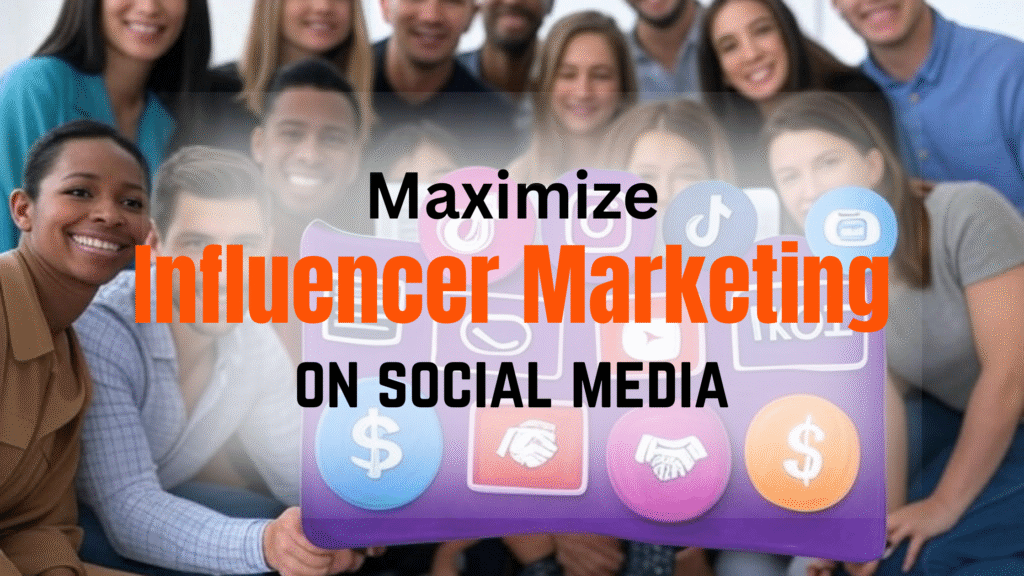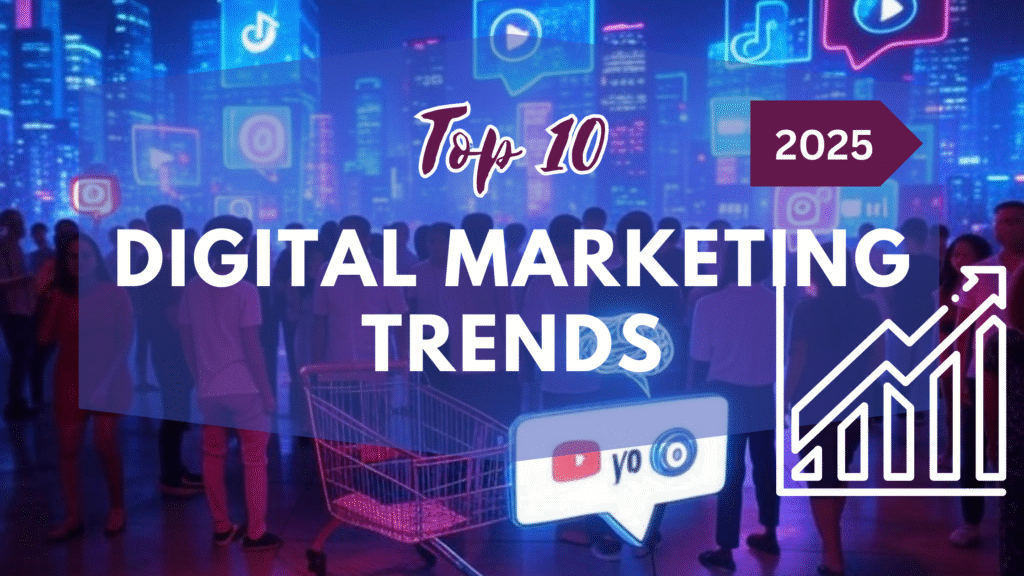Introduction
In 2025, influencer marketing remains a cornerstone of social media strategies, offering brands a powerful way to connect with audiences authentically. As consumers increasingly trust influencers over traditional advertisements, this approach delivers exceptional engagement and return on investment (ROI). With TikTok and Instagram dominating the landscape, and micro-influencers gaining traction, brands must adapt to evolving trends to maximize impact. This guide explores why influencer marketing matters, provides actionable strategies, and highlights best practices for success in 2025. Targeting high-searched keywords like “influencer marketing,” “social media trends,” “micro-influencers,” and “TikTok campaigns,” this blog equips marketers to harness the potential of influencer partnerships effectively.
Why Influencer Marketing Matters
Influencer marketing has solidified its place as a high-impact strategy, driven by its ability to build trust and engagement. Key statistics underscore its importance:
Influencer marketing delivers 11x higher ROI than traditional digital advertising, making it a cost-effective choice for brands (Exploding Topics).
49% of consumers rely on influencer recommendations when making purchase decisions, highlighting the power of peer-driven trust (Smart Insights).
TikTok and Instagram account for 70% of influencer campaigns, with TikTok searches for “influencer ads” surging by 8,100% over five years (Exploding Topics).
Micro-influencers (10k-100k followers) achieve 60% higher engagement rates compared to mega-influencers, offering better value for targeted campaigns (Smart Insights).
Beyond engagement, influencer marketing drives conversions, with shoppable posts on platforms like Instagram and TikTok enabling seamless purchases. This strategy also enhances brand visibility, as influencer content often ranks well in social search results.
Key Strategies for Influencer Marketing Success in 2025
To maximize the impact of influencer marketing on social media, brands must adopt strategies that align with audience preferences and platform dynamics. Below are seven actionable strategies for 2025:
1. Partner with Micro-Influencers
Micro-influencers, with 10,000 to 100,000 followers, often have highly engaged, niche audiences, making them ideal for targeted campaigns. They achieve 60% higher engagement rates than mega-influencers and are more cost-effective, with 82% of consumers more likely to follow their recommendations (Smart Insights).
Why It Matters: Micro-influencers foster authentic connections, driving better engagement and trust.
Actionable Step: Use tools like HypeAuditor to find micro-influencers in your niche and evaluate their audience engagement.
2. Prioritize Authenticity and Brand Alignment
Authenticity is the cornerstone of successful influencer marketing. Partner with influencers whose values and content style align with your brand to ensure genuine endorsements. Audiences can spot inauthentic partnerships, which can harm credibility. For example, a fitness brand should collaborate with influencers who genuinely use and advocate for fitness products.
Why It Matters: Authentic partnerships build trust, with 90% of consumers valuing genuineness in influencer content (Exploding Topics).
Actionable Step: Vet influencers by reviewing their past content and ensuring their audience demographics match your target market.
3. Focus on TikTok and Instagram
TikTok and Instagram remain the leading platforms for influencer marketing, with 70% of campaigns occurring on these channels. TikTok excels in short-form video content, while Instagram offers versatility with Reels, Stories, and shoppable posts. Both platforms prioritize video, which drives 66% higher engagement than static content (Search Engine Journal).
Why It Matters: These platforms have massive, engaged user bases and advanced advertising tools.
Actionable Step: Collaborate with influencers to create 15-30 second TikTok videos or Instagram Reels that showcase your product in action.
4. Leverage Shoppable Posts and Features
Shoppable posts allow influencers to tag products directly in their content, enabling seamless purchases. Instagram’s shopping features and TikTok’s in-app purchasing tools make it easy for followers to buy without leaving the platform. This direct path to purchase increases conversion rates significantly (Exploding Topics).
Why It Matters: Shoppable features reduce friction in the buyer journey, boosting sales.
Actionable Step: Ensure influencers tag your products in Instagram posts or use TikTok’s shopping links, and track conversions with platform analytics.
5. Create Storytelling-Driven Content
Influencers excel at storytelling, which resonates emotionally with audiences. Encourage influencers to share personal experiences with your product through behind-the-scenes videos, tutorials, or day-in-the-life content. For instance, a beauty influencer might create a “get ready with me” video featuring your skincare product.
Why It Matters: Storytelling fosters emotional connections, driving engagement and loyalty.
Actionable Step: Provide influencers with creative freedom to craft narratives around your product, ensuring alignment with your brand message.
6. Incorporate Trends and Challenges
Social media trends, such as viral challenges or trending audio, can amplify the reach of influencer campaigns. Encourage influencers to participate in popular TikTok challenges or use trending Instagram filters while featuring your product. This increases visibility as platforms prioritize trending content in their algorithms (Search Engine Journal).
Why It Matters: Trends boost discoverability and engagement by tapping into what’s popular.
Actionable Step: Monitor TikTok’s “For You” page or Instagram’s Explore tab to identify trends, and brief influencers to incorporate them.
7. Track and Optimize with Analytics
Measuring campaign success is crucial for refining strategies. Use tools like Hootsuite or Influencity to track metrics such as engagement rate, reach, clicks, and conversions. Analyze which partnerships perform best and adjust future campaigns accordingly.
Why It Matters: Data-driven insights ensure campaigns deliver maximum ROI.
Actionable Step: Set up UTM parameters for influencer links and monitor performance in Google Analytics or platform-specific dashboards.
Platform-Specific Strategies
Each platform offers unique opportunities for influencer marketing. Here’s how to approach the top two in 2025:
TikTok
Audience: Primarily Gen Z and Millennials.
Strategy: Focus on short-form, trend-driven videos (15-60 seconds). Encourage influencers to use trending sounds or participate in challenges.
Example: A fashion brand might partner with a TikTok influencer to create a video showcasing a “fall outfit idea” using a trending audio clip.
Audience: Broad demographic, with a focus on Millennials and Gen X.
Strategy: Use Reels for short-form content and Stories for daily engagement. Leverage shoppable posts to drive sales.
Example: A skincare brand could collaborate with an influencer to post a Reel demonstrating a morning routine, with tagged products linked to the store.
Table: Influencer Marketing Metrics to Track
Metric | What It Measures | Tool to Use |
|---|---|---|
Engagement Rate | Likes, comments, shares | Hootsuite, Influencity |
Reach | Total audience exposure | Platform analytics |
Clicks | Traffic driven to your site | Google Analytics |
Conversion Rate | Sales or actions from campaign | Google Analytics, TikTok Analytics |
ROI | Revenue vs. campaign cost | Influencity, manual tracking |
Case Studies
Glossier’s Micro-Influencer Strategy: Glossier partnered with micro-influencers on Instagram, achieving a 30% increase in engagement and a 15% sales boost (Exploding Topics).
Gymshark’s TikTok Campaign: Gymshark collaborated with fitness influencers on TikTok for a workout challenge, reaching 50 million users and driving brand awareness (Smart Insights).
Challenges and Considerations
Influencer marketing presents challenges:
Authenticity Risks: Inauthentic partnerships can damage credibility. Vet influencers carefully to ensure alignment.
Cost Variability: Influencer fees vary widely; micro-influencers are more affordable but may require more partnerships for scale.
Platform Regulations: Ad disclosure rules (e.g., #ad) must be followed to maintain transparency.
To address these, start with small campaigns, prioritize genuine partnerships, and ensure compliance with platform guidelines.
Conclusion
Maximizing influencer marketing on social media in 2025 requires a strategic approach that prioritizes authenticity, leverages micro-influencers, and focuses on platforms like TikTok and Instagram. By creating storytelling-driven content, incorporating trends, and tracking performance with analytics, brands can drive engagement and conversions effectively. Start by identifying the right influencers, setting clear goals, and using data to refine your campaigns. With these strategies, you’re ready to unlock the full potential of influencer marketing in 2025.
Further Reading
13 Top Marketing Trends for 2025 | Exploding Topics
10 Actionable Digital Marketing Trends for 2025 | Smart Insights
Top 10 Digital Marketing Trends for 2025 | Search Engine Journal
HypeAuditor
Hootsuite
Influencity
Google Analytics


